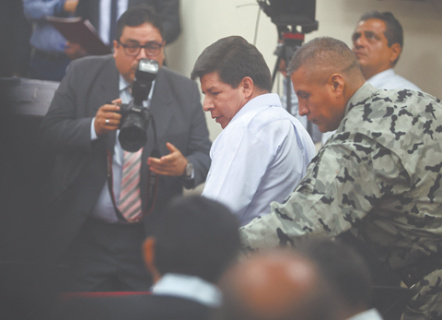
Latin American countries are often featured in news reports related to high-profile corruption scandals. But one of the continent’s most economically successful states, Peru, which has 33 million inhabitants, stands out from its neighbors. The number of former presidents of the country involved in corruption cases, as well as those under investigation or serving prison sentences for this reason, is breaking all imaginable sad records.
Former Peruvian President Ayanta Humala and his wife Nadine Heredia have just been sentenced to 15 years each on charges of laundering public funds and accepting large-scale bribes. Following the sentencing, Brazil granted Senora Nadine and her youngest son political asylum at its embassy in Lima.
Humala thus became the third president charged by the court with corruption in the last two decades. He was also convicted of embezzlement of public funds allocated under contracts with the Brazilian construction giant Odebreht. And bribes from Brazilian businesses, as proved in court, financed his first unsuccessful election campaign.
Humala is a former military man, he was president of Peru from 2011 to 2016, and, as stated in the indictment, he received a $3 million bribe from Brazilians for the election campaign in 2006. As well as about $800,000 from the Venezuelan government when Hugo Chavez was president there, who supported Humala as a leftist politician.
Since it has become common practice for Peru to accuse ex-presidents of corruption with sentencing, the building of the police academy in the suburbs of Lima was renovated on the instructions of the country’s Attorney General to serve prison terms.
Interestingly, after the verdict was announced, the police arrested 62-year-old Humala right in the courtroom and transported him to prison. His wife did not appear at the announcement of the verdict on her future fate. After learning about the court’s decision, she immediately took a taxi and headed with her son to the Brazilian Embassy, where she asked for political asylum in accordance with the 1954 Convention allowing the granting of asylum on the territory of foreign embassies.
The entire recent Peruvian history is closely linked to high-profile corruption scandals. For example, Alejandro Toledo, the president of Peru in 2001-2006, was sentenced to 20 years in prison for accepting a $35 million bribe. Moreover, he was handed over to Peruvian justice by the US authorities, where Toledo once taught at the University of Berkeley.
Another ex-president, Alan Garcia, who twice led Peru, was accused of bribery and in 2019, when representatives of the prosecutor’s office came after him, committed suicide. Pedro Pablo Kuczynski, who headed Peru immediately after Humala’s presidential term, spent several years under house arrest, awaiting the results of an investigation into the same corruption of senior government officials.
A truly unique situation has developed in Peru during the COVID-19 pandemic. In two years, three (!) presidents have changed there, each of them accused of corruption, and one of the “interim heads of state” managed to pocket 10,000 covid vaccines donated to the government by the Chinese embassy during a week in office. Their wife sold this “president for a week” smartly through her friends on the local market.
One of Peru’s most controversial presidents, Japanese–born politician Alberto Fujimori, who led the country in the 1990s, has been accused of murder and massive human rights violations. He received a 25-year prison sentence, was pardoned two years ago by current President Dina Boluarte on humanitarian grounds, and died shortly after at the age of 86.
And the penultimate president of the country, former schoolteacher Pedro Castillo, was accused by parliament of corruption and nepotism, abuse of office and trafficking in government positions (all this was done through his wife and her relatives). He has been serving a three-year pre-trial detention since 2022 and is not eligible to participate in the next election. Curiously, the Mexican government granted political asylum to members of the Castillo family, for which the current President, Boluarte, expelled the Mexican ambassador from Peru.
Dina Boluarte herself has been repeatedly accused of corruption by her political opponents. For several months, the so-called “Rolex Gate” was thundering in the country when a wristwatch worth 300 thousand dollars, presented to her by the same Brazilian concern, was discovered at the president’s house. She denies the charges, and while she holds the highest office, only parliament has the right to remove her from power. And although Boluarte, as journalists found out, clearly does not live by presidential means, she is still supported by the military. So she will most likely run the country until the next election.
New presidential elections in Peru are scheduled for April next year. And already, representatives of the opposition are threatening to send the current head of the country to jail as soon as the new head of state enters the presidential palace. In Peru, mass demonstrations are periodically held by supporters of Pedro Castillo, who is in prison (these are mainly people from rural areas and Quechua Indians) demanding that the legitimacy of former Vice President and now head of state Boluarte not be recognized. And in this situation, even the more than decent state of Peru’s national economy is unlikely to provide it with guarantees of non-jurisdiction.
